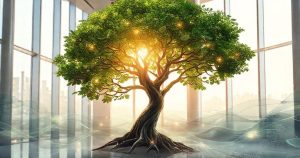Introduction to AI Image Generation for Studio Ghibli Style Artwork
Studio Ghibli, one of Japan’s most renowned animation studios, has captivated audiences worldwide with its beautifully crafted, imaginative films. The unique blend of traditional and fantastical elements in Ghibli’s style has inspired countless fans and artists. However, replicating this distinctive style, characterized by meticulous attention to detail and a deep understanding of both Japanese culture and universal human emotions, can be a daunting task, especially for those without extensive experience in graphic design or digital art.
The advent of AI image generators has dramatically changed the landscape of visual content creation, offering a powerful tool for artists, designers, and fans of Studio Ghibli to produce stunning, Ghibli-inspired artwork. These AI tools, trained on vast datasets of images, can synthesize new visuals based on text prompts, allowing users to generate professional-quality images that capture the essence of Ghibli’s style with unprecedented ease and speed.
For those interested in exploring the creative potential of AI image generation, especially in the context of Studio Ghibli’s aesthetic, it’s essential to understand the basics of how these tools work, their limitations, and the strategies for crafting effective prompts that yield desired results. This comprehensive guide is designed to walk you through the process, from the fundamentals of AI image generation to advanced techniques for mastering the Ghibli style using AI.
Before diving into the specifics of using AI for Ghibli-style artwork, it’s beneficial to consider the broader implications of this technology. AI image generators are not just tools for creative expression; they also represent a significant shift in how we approach visual content creation. By democratizing access to professional-grade design capabilities, these platforms are empowering individuals and small businesses to compete in markets previously dominated by large corporations with extensive design budgets.
Moreover, the integration of AI in the creative process raises important questions about authorship, originality, and the future of art. As AI-generated images become increasingly sophisticated, the line between human and machine creativity begins to blur. This blurring of boundaries presents both opportunities and challenges, necessitating a nuanced discussion about the role of AI in artistic expression and the ethical considerations surrounding its use.
Understanding AI Image Generators
AI image generators utilize deep learning models, specifically generative adversarial networks (GANs) or variational autoencoders (VAEs), to produce new images based on the input they receive. The process begins with the user providing a text prompt, which the AI then interprets to generate an image that corresponds to the described scene, object, or character. The sophistication of the generated image depends on the complexity of the prompt, the quality of the training data, and the capabilities of the AI model itself.
One of the most significant advantages of using AI image generators is their ability to learn from vast amounts of data, including but not limited to, styles of specific artists, historical periods, or cinematic universes like that of Studio Ghibli. By analyzing thousands of images from Ghibli films, an AI model can identify and replicate the distinctive visual elements that define the Ghibli style, such as the meticulous detailing, vibrant color palettes, and the blend of fantasy and reality.
However, achieving high-quality results with AI image generators, especially for nuanced and complex styles like Ghibli’s, requires more than just technical proficiency. It demands a deep understanding of the aesthetic, thematic, and narrative elements that underpin Ghibli’s films. Users must be able to craft prompts that not only describe the visual aspects of the desired image but also capture the essence and mood of the Ghibli style.
This is where the art of prompt engineering comes into play. Prompt engineering involves designing and refining text prompts to elicit specific responses from the AI, essentially guiding the model towards producing an image that aligns with the user’s vision. For Ghibli-style artwork, this might involve including details about character designs, environmental settings, lighting conditions, and even the emotional tone of the scene.
Mastering Prompt Engineering for Ghibli Style Artwork
Prompt engineering is a critical skill for anyone looking to create high-quality, Ghibli-inspired artwork using AI image generators. The key to successful prompt engineering lies in the ability to provide the AI with a clear, detailed, and contextually rich description of the desired image. This involves not just listing visual elements but also conveying the mood, atmosphere, and narrative context of the scene.
A well-crafted prompt for a Ghibli-style image might include descriptions of the main characters, their expressions and poses, the setting (whether it’s a fantastical forest, a rural village, or an urban landscape), the time of day, the lighting conditions, and any specific visual effects or textures that are characteristic of Ghibli’s style. The more specific and detailed the prompt, the higher the likelihood of the AI generating an image that meets or exceeds the user’s expectations.
Experimentation is also a crucial part of the process. Given the current state of AI technology, even the best prompts can sometimes yield unexpected results. However, these surprises can often lead to new ideas and insights, encouraging users to explore different creative pathways. The iterative process of refining prompts, analyzing results, and adjusting approaches is central to mastering the use of AI image generators for Ghibli-style artwork.
Furthermore, the community of AI artists and enthusiasts plays a vital role in the development and sharing of best practices for prompt engineering. Online forums, social media groups, and specialized platforms dedicated to AI-generated art are filled with resources, tutorials, and examples of successful prompts that can serve as inspiration or starting points for one’s own creative projects.
Features and Benefits of Using AI Image Generators
The use of AI image generators for creating Ghibli-style artwork offers a multitude of benefits, ranging from the democratization of professional-grade design tools to the empowerment of individual creativity. One of the most significant advantages is the speed at which users can generate high-quality images. What would traditionally require hours of manual work can now be accomplished in a matter of seconds, allowing for rapid prototyping and exploration of different ideas.
Moreover, AI image generators make it possible for individuals without extensive design experience to produce visuals that are on par with those created by professional designers. This accessibility is particularly beneficial for small businesses, indie game developers, and content creators who may not have the budget to hire professional designers or invest in expensive design software.
The creative freedom offered by AI image generators is another notable benefit. By automating the more mundane aspects of the design process, these tools enable users to focus on the creative and conceptual aspects of their work. This can lead to a more efficient workflow and the ability to explore a wider range of ideas and styles, including the intricate and detailed world of Studio Ghibli.
Frequently Asked Questions
Q: Can I use AI-generated images for commercial purposes?
A: Yes, many AI image generators, including those offered for free, provide options for commercial use. However, it’s essential to review the terms of service for each platform, as the rules regarding commercial use, attribution, and licensing can vary significantly.
Q: How do I ensure the quality of the generated images?
A: The quality of AI-generated images depends on several factors, including the complexity of the prompt, the quality of the training data, and the capabilities of the AI model. Crafting detailed and contextually rich prompts, experimenting with different models, and refining your approach based on feedback are key strategies for achieving high-quality results.
Q: Are AI image generators a replacement for human artists and designers?
A: AI image generators are not intended to replace human creativity but rather to augment it. These tools can handle repetitive and time-consuming tasks, freeing human artists and designers to focus on high-level creative decisions, conceptual work, and the aspects of art and design that require a human touch.
Conclusion
The world of AI image generation offers unparalleled opportunities for creative expression and innovation, particularly for those inspired by the unique aesthetic of Studio Ghibli. By understanding the capabilities and limitations of AI image generators, mastering the art of prompt engineering, and embracing the iterative process of creation and refinement, individuals can unlock new levels of artistic potential and bring their most imaginative ideas to life.
As AI technology continues to evolve, we can expect even more sophisticated tools and platforms to emerge, further blurring the lines between human and machine creativity. However, the essence of art and design—emotion, intuition, and the human experience—will always remain at the forefront of what makes a piece of art truly special and impactful.
For those embarking on this creative journey, whether you’re an artist, designer, fan of Studio Ghibli, or simply someone fascinated by the possibilities of AI, remember that the true power of AI image generators lies not in their ability to mimic human creativity but in their capacity to inspire, to collaborate, and to push the boundaries of what is possible.
Start exploring the world of AI image generation today, and discover how these innovative tools can help you unleash your creativity and bring your vision to life in ways you never thought possible.
Visit Icebox AI to start creating your own stunning Ghibli-style artwork with our free AI image generator.



